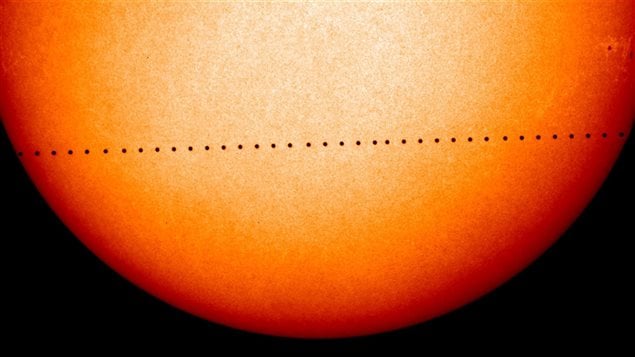Canadian astronomy buffs from coast to coast are pointing their telescopes at the sun hoping catch a glimpse of a rare astronomical event.
Planet Mercury began making its way across the face of the sun at 7:12 a.m. ET and will complete its crossing at 2:42 p.m. ET, moving from east to west.
Transits of Mercury happen only about 13 times a century — the last was in 2006 — and Canada isn’t always as well-placed to see the entire event as it is this time. The next will be in 2019, and then 2032, but it will be invisible from Canada. There won’t be another daytime Mercury transit viewable from Canada until 2049.
This time around, Mercury’s seven-and-a-half-hour glide across the Sun will be visible in its entirety from much of eastern, central and northern Canada.
Several astronomy clubs are inviting Canadians to witness the event through specially equipped telescopes. Experts warn that you shouldn’t look at the sun directly unless your telescope is equipped with special filters.
But even if you can’t get to one of the astronomy clubs or planetariums, you can follow Mercury’s transit through a live NASA feed.

Mercury spins around the Sun every 88 days, but its orbit is tilted relative to the Earth’s. This makes it relatively rare for the three celestial bodies to line up in space.







For reasons beyond our control, and for an undetermined period of time, our comment section is now closed. However, our social networks remain open to your contributions.